Sigma 24-70mm f/2.8 EX DG
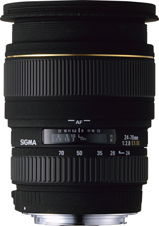 Originally designed for full frame 35mm film cameras, this lens has now been upgraded as part of Sigmas programme to make all of its lenses compatible with digital sensors. We take a look at whether this focal range is still useful in the digital age.
Originally designed for full frame 35mm film cameras, this lens has now been upgraded as part of Sigmas programme to make all of its lenses compatible with digital sensors. We take a look at whether this focal range is still useful in the digital age. Specification
- Focal length 24-70mm
- Aperture f/2.8
- Angle of view 84.1 - 34.3
- Filter size / type 82mm
- Construction Elements/groups 14 elements in 13 groups
- Focusing type Internal
- Closest focus 0.40m
- Weight 0.715kg
- Dimensions (Dia x length) 88.7x115.5mm
- Mounts available Sigma, Canon, Nikon(D), Pentax, Minolta(D)
- Tripod bush No
- Price 349.99
As an EX lens, Sigmas top range, the lens comes with a padded, zip-up pouch and with this re-vamp comes a belt loop that makes the pouch useful. In the box also, is Sigmas extended warranty documentation, extending the warranty in the UK to a useful 3 years. A multi-language booklet on the functions of the lens is also supplied. Lens and mount caps, along with a useful petal shaped hood complete the package.
The finish on these EX lenses is a smart matt black that I have found to be hardwearing, as I have said before. Zooming on this lens is unusual in that the closed position is approximately 60mm. The front element extends slightly from this, anticlockwise out to 70mm and extends the front element by some 28mm when turned clockwise to 24mm. The front element does not rotate but is a fair size at 82mm.
Due in part to the wide aperture, autofocusing was fast and accurate, although a little noisy by todays standards. An HSM motor would have been a nice addition. Hunting for a lock on was a rare occurrence. The manual focus ring with a distance window and depth-of-field scale took up the front two-thirds of the barrel and the small zoom ring behind it is marked at 24,28, 35, 50 and 70mm.
In use, there was no zoom creep, so a lock mechanism was not required.
Optical Quality
With lenses that were, or are designed for 35mm film cameras, using them on cropped dSLR cameras has often shown excellent edge performance and this is again the case with this lens. With two hybrid aspherical elements, one glass mould aspherical and two Special Low Dispersion (SLD) elements in the construction, chromatic aberrations and distortions have been well controlled and I found no concerns except a very slight pincushion at 70mm. It s slightly soft wide open, as the aperture closed down the lens produced very pleasing results and between f/8 and f/16 was in the area of razor sharp throughout the focal range Despite the strange zooming action the lens provided results well in keeping with expectations.
 | 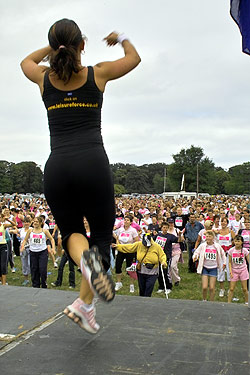 A handy lens in large crowds. |
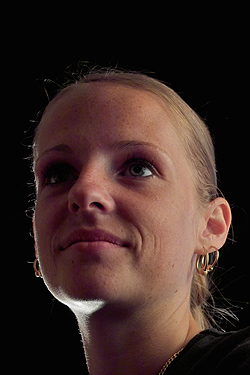 Also useful in the studio for portraiture. |
Click on each of the comparison photos below to view full size versions
 24-70mm at 24mm and f/8 |  24-70mm at 70mm and f/8 |
 24-70mm at 24mm and f/2.8 |  24-70mm at 70mm and f/2.8 |
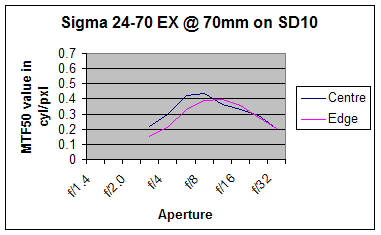
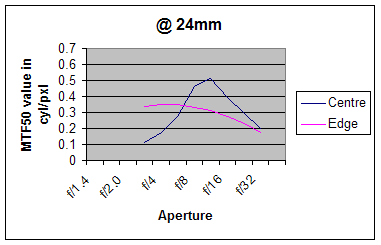
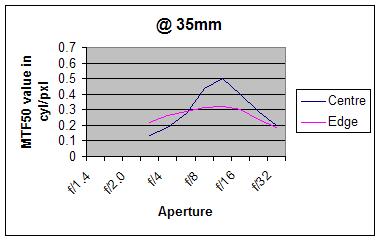
Verdict
This is a large lens that is well built and feels like it will go the distance. The zoom ring is surprisingly small for the size of the mechanism it has to move, but although a little heavy in operation, worked well. Autofocus is noisy but accurate. The 24mm end is just wide enough to start being call wide angle on a cropped sensor, but if you are still mixing digital with film, then this lens is a very good buy.
Pros
Cons
To support the site, check the latest price of this lens here.
Test by Ian Andrews www.wildaboutkent.co.uk
Add your message
Login required
Please login here or if you've not registered, you can register here. Registering is safe, quick and free.
Please login here or if you've not registered, you can register here. Registering is safe, quick and free.
photodo Stats
1102 lenses
428 MTF tests
74 in-depth photodo reviews
100+ users join each day
Help the lens community by reviewing or rating a lens today via our lens search
428 MTF tests
74 in-depth photodo reviews
100+ users join each day
Help the lens community by reviewing or rating a lens today via our lens search
Latest Lens Reviews
- Chinon 28mm f/2.8 Vintage Lens Review
- Canon EF 70-200mm f/4L IS II USM Lens Review
- Samyang AF 85mm f/1.4 EF Review
- Sigma 70mm f/2.8 DG Macro Art Review
- Samyang AF 24mm f/2.8 FE Review
- Meike 50mm f/1.7 Review
- Tamron 70-210mm f/4 Di VC USD Review
- Lensbaby Burnside 35mm f/2.8 Review
- Asahi Super Takumar 50mm f/1.4 Review
- Asahi Super-Multi-Coated Takumar 135mm f/3.5 Review
